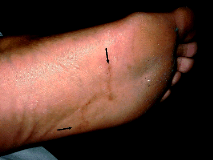

It may exceed 10 meters in length and is found in Europe, Russia and the United States. Fish tapeworm ( Diphyllobothrium latum) is contracted by infected freshwater fish.– a rash on the lower arm on the sites of parasite entry Schistosome dermatitis (swimmer’s itch) – Diagnosis is made by finding eggs in the stool and urine. Adult parasites live in intestinal veins and release eggs into the intestinal hollow. Schistosoma mansonicauses intestinal schistosomiasis (bilharziasis), mainly in Africa, Middle East, Caribbean and South America. It is about half an inch long and 1 millimeter thick.Roundworm – Ascaris lumbricoides (several inches long)

HOOKWORMS IN HUMANS POOP SKIN
Main symptoms are abdominal pain, muscular and joint pain, swelling of the eyes and skin rash. Parasites move from the intestine into muscles and other organs where they form cysts – encapsulated forms, which are hard to eradicate. It may be acquired by eating undercooked contaminated pork.

The result are small intestinal or colonic inflammation and ulcers, anemia, and protein, iron and vitamin (mainly A, C, B12) deficiency. How Intestinal Worms Cause Disease?Īdult worms, which may be from 1 millimeter to several meters long, invade the bowel wall and suck the blood from it, or live freely in the intestine and utilize nutrients from the bowel content. Common garden worms usually do not cause illness in human. When these parasites reach the small or large intestine they grow into adult worms. Certain types of immature worms may penetrate through your skin during swimming or walking barefoot. Children may contract infection from sandboxes contaminated with pets’ stool. One can also be infected by ingesting dog’s fleas that have ingested parasitic eggs. Once outside the body, eggs need several days or weeks to develop into the infective stage (cysts) or immature worms (larvae) that may be ingested when you eat with soil-contaminated hands or when you eat raw unwashed vegetables.Īnother source of intestinal worms is undercooked infected meat of domestic pig, freshwater fish or wild animals (bear, walrus, etc.). Worm eggs, shed in the stool of humans or animals infected with adult worms, can contaminate soil or water.

Sources of Human Intestinal Worm Infection


 0 kommentar(er)
0 kommentar(er)
